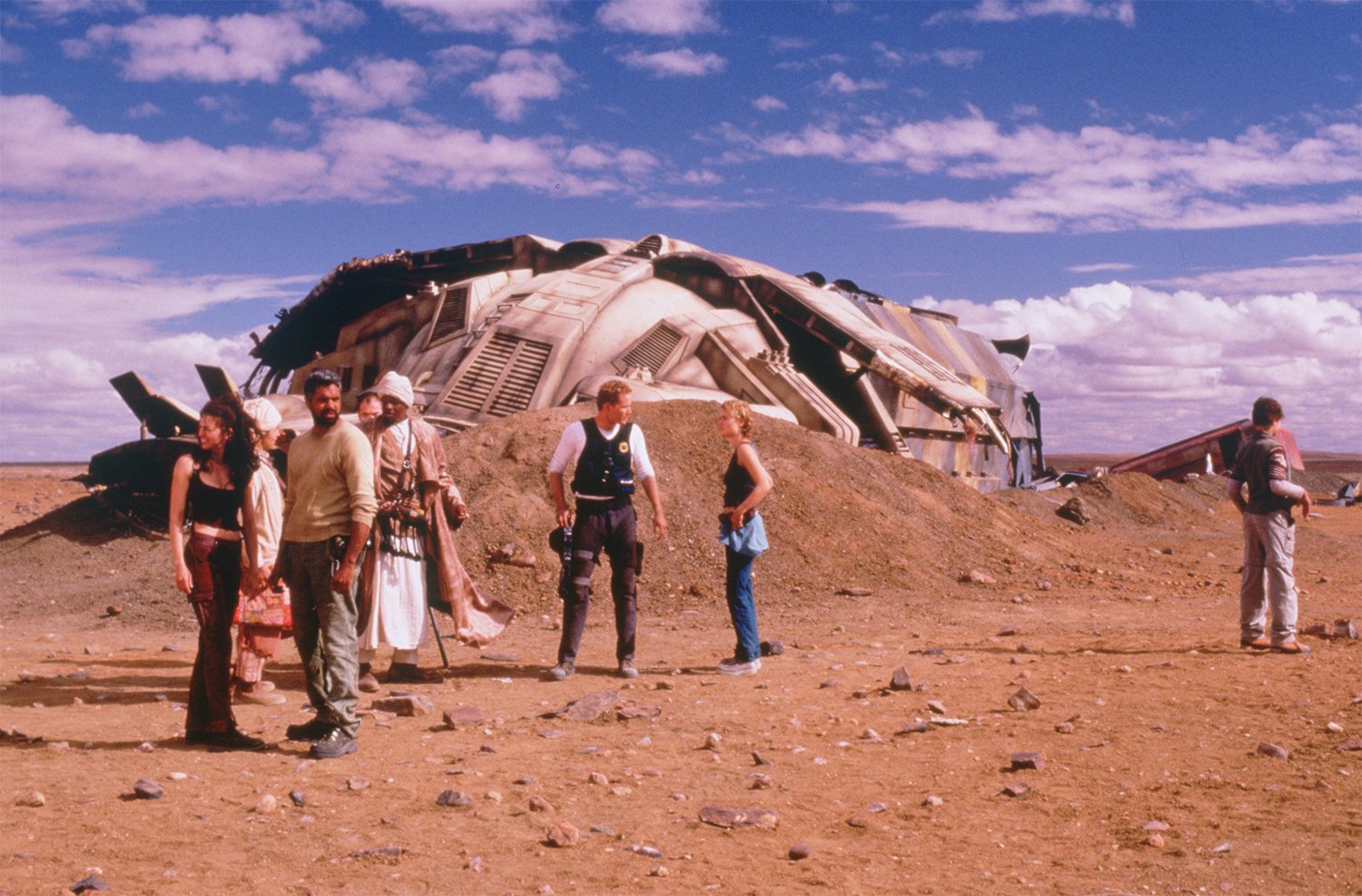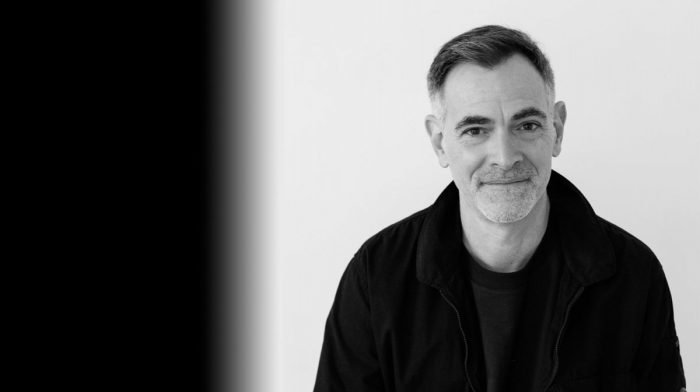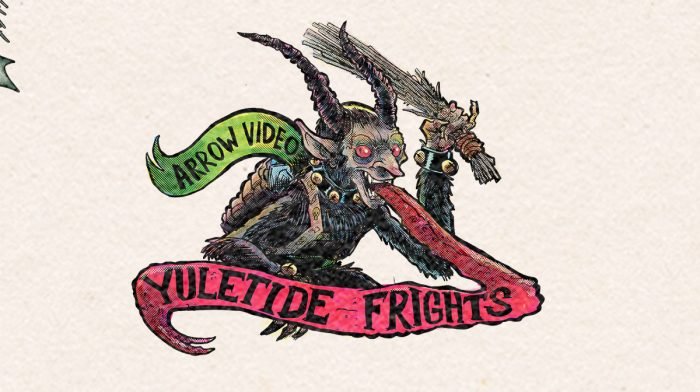Pitch Black probably doesn’t exist without one of the most controversial sequels of all time. In the late ‘80s, writer/director David Twohy was hired to reconfigure a script by the legendary sci-fi writer William Gibson for a little movie called Alien 3. One of the first changes that Twohy made was to change the setting of the film to a planet that was being used as a prison, leading to the tough-talking, typically-bald characters that populate that divisive film. One could easily see Vin Diesel’s Richard B. Riddick and the alien creatures he battles emerging from this setting. The disastrous development on Alien 3 led to Twohy leaving that project early, but he had to be surprised to see them reflected a decade later when a script by Ken and Jim Wheat called Pitch Black landed on his desk. Reworking the original idea to reflect a vision he liked, Twohy turned Pitch Black into a clever hybrid of incredibly simple genre ideas turned upside by role reversals. Like a lot of sci-fi, it owes a great deal to the Western, and it maintains a charming simplicity that made its obviously low-budget more of an asset than a curse. It would spawn two sequels, a comic, a video game, and a third sequel in production for a 2023 release. Riddick was just getting started.
When a script that was called Nightfall at the time came to Twohy, the writer saw the obvious parallels to Alien 3 as Riddick’s convict is required to access his heroic side to survive an attack by an alien species on a distant planet. He reworked it a bit to make the characters and their arcs more distinct, saying “Even Alien had stock characters who merely responded to what was going on. I’ve got three characters in this film who not only change from where they begin but also change from where you expect them to end up.”
By the time Twohy was done, the charmingly simple structure of Pitch Black was in place. Debris from a comet causes a transport ship to crash on a distant planet. The survivors include a vicious convict named Riddick, a tough guy named William Johns (Cole Hauser), and a docking pilot named Carolyn Fry (Radha Mitchell). They’re joined by a Muslim priest named Abu (Keith David), prospectors named Shazza (Claudia Black) and Zeke (John Moore), and even a pretentious rich guy named Paris (Lewis Fitz-Gerald). However, the action focuses on the trio that Twohy mentioned and how their roles shift. Johns pretends to be a cop, but he’s just a bounty hunter with less of a moral code than the convict at the film’s center. Fry is forced into a leadership role that she is concerned she can’t fill. And, of course, most of all, Riddick goes from the bad guy to the hero of the piece, amplified by a power to see through the darkness in which the film’s enemies exist but also an old-fashioned toughness that has been a core ingredient in anti-heroes for generations.

Riddick (Vin Diesel) proves if you want to be a success you need cool eyewear in Pitch Black (2000)
Twohy was given almost no money to bring what is a pretty ambitious project to life. It started at $25 million, which meant household names were not starring in this one. Although the story goes that Steven Seagal was interested in making the film but Twohy refused to work with him. Imagine that alternate reality.
Vin Diesel had yet to redefine family as Dom Toretto a year after the release of Pitch Black. The future star was coming off Saving Private Ryan and his voice work in The Iron Giant, but this was a major turning point in his action star legacy, a movie that really helped put him on the map. Cole Hauser had a solid career, but wouldn’t cost much, and Radha Mitchell was coming off the success of Neighbours in Australia and the indie darling High Art, but her career was really just beginning too. In terms of legends, the biggest in the first film might be Keith David, a genre icon already.
Pitch Black turned a remote region of South Australia into its distant planet of deadly creatures (with some interiors in the ship shot in Queensland too and some miniature work done in Los Angeles.). Twohy uses color like a weapon, washing the film in a hot orange palette when the travelers first land, and then turning it blue when the suns shift. It makes the solar eclipse that plunges the planet into darkness even more powerful by contrast.
However, it’s not the color scheme that makes Pitch Black so remarkably rewatchable. It’s the addictive simplicity of the needs of the characters. First, it’s a survival story about people who crash-land in the middle of nowhere. How do they get home? And that classic plot is amplified by the presence of a convict, someone smart enough to get a “surgical shine job” on his eyeballs to make it easier for him to survive the pitch black prison he’s supposed to inhabit for the rest of his mortal days. (Cost? 20 Menthol Kools). When Riddick escapes, Pitch Black shifts to a “man vs. man” archetype with “good guys” forced to face not only the elements of a brutal planet but a violent convict in their midst.
Of course, Pitch Black really cements its legacy when the suns go down. After setting up the characters for what feels like a long time when compared to how quickly modern action films are forced to “get to the good stuff,” the planet is thrust into darkness during a solar eclipse, revealing the alien-like monsters who come out at night. To be fair to Giger’s creation, the monsters here are more instinctual forces of nature, and less intelligent than the ones that hunted Ripley. They will even kill each other in fits of violence. They’re not hunters as much as an unstoppable force. Unless you have a Riddick on your side.
Released shortly after the turn of the millennium in February 2000, Pitch Black was a solid hit, making half its budget back on opening weekend. It would perform well around the world, getting to over $50 million, but it grew a more loyal following as Diesel became a bigger star. It was also a regular inhabitant of cable network replays, and people learned how hard it can be to turn away from a simple story this well told.

Recreating a dusty, distant planet in South Australia.
Pitch Black had such strong legs after release that a sequel was commissioned, bringing Twohy and Diesel (and Keith David) back to the franchise in a film that’s so drastically different from the original that they barely resemble one another. Whereas Pitch Black is traditional, bare-bones genre fare, 2004’s The Chronicles of Riddick is an extravagant space opera that tries to build out the world of this character in a way that’s overly complicated and damagingly self-serious. (The movie works better when it feels, again, like Alien 3 with Riddick and a small crew trying to survive in a grimy, dirty setting. Less so when it treats its power players like Shakespearean roles.)
By this time, however, Diesel was a star, which meant that the film grossed over $100 million worldwide despite being considered a disappointment critically and even commercially given the much-larger budget. The Chronicles of Riddick remains an odd sequel, a movie that almost seems to fundamentally misunderstand what made its predecessor work, and yet it’s a fascinating misfire, a movie with totally committed performances from an over-qualified cast (Judi Dench, Thandiwe Newton, Colm Feore, Karl Urban). And Diesel is so much more confident in its star presence that it’s interesting to contrast the two. It’s also a neat bit of trivia in that it’s the reason that Diesel turned down a massive payday to make 2 Fast 2 Furious – he was busy playing Riddick again.
There was also an animated short film released on home video that same year (2004) that attempted to connect the action of Pitch Black and The Chronicles of Riddick, and an excellent video game called The Chronicles of Riddick: Escape from Butcher Bay. This was a franchise now, not just a cult classic. And that fact was cemented further by another sequel in 2013 titled merely Riddick that bears more of a resemblance to the first film than the second, and earned better reviews. Riddick: Furya is in production now, slated for release sometime in 2023.
Almost a quarter-century after the first film, Riddick is still a remarkably popular character. As of this writing, the second and third films are in the top ten on Netflix. Vin Diesel remains a massive star, which should propel the fourth film in an era of constant nostalgia for characters from the ‘90s and ‘00s. Will Furya continue to try and go bigger with new characters and ideas or return the series to the elements that make Pitch Black still the most beloved part of this entire legacy? Will Twohy go back to basics? Maybe he should watch Alien 3 again before he starts shooting. He can leave the lights on.








